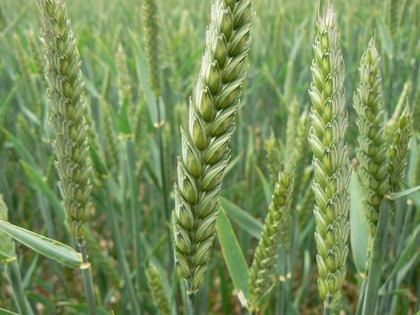
An international research team, including crop scientists from NIAB, genetically characterised nearly 80,000 samples of wheat from the germplasm banks of the International Maize and Wheat Improvement Center (CIMMYT) and the International Center for Agricultural Research in the Dry Areas (ICARDA).
NIAB’s Deputy Director Professor Mario Caccamo explained that the results give researchers and breeders a more detailed picture of the wheat diversity available. “The analysis identified regions of the wheat genome linked to important yield or agronomic bottlenecks introduced by successive breeding programmes. It also contributes to our understanding of the impact of the synthetic wheat varieties, most latterly with NIAB’s resynthesised ‘superwheat’ programme, in adding to the diversity, in particular in the D subgenome.”
The findings of the study published today in Nature Communications are described as ‘a massive-scale genotyping and diversity analysis’ of the two types of wheat grown globally (bread and pasta wheat) and of 27 known wild species.
The main objective of the study was to characterise the genetic diversity of CIMMYT and ICARDA’s internationally available collections, which are considered the largest in the world. The researchers aimed to understand this diversity by mapping genetic variants to identify useful genes for wheat breeding. The results show distinct biological groupings within the crop and suggest that a large proportion of the genetic diversity present in landraces has not been used to develop new high-yielding, resilient and nutritious varieties.
“The analysis of the wheat accessions reveals that relatively little of the diversity available in the landraces has been used in modern breeding, and this offers an opportunity to find untapped valuable variation for the development of new varieties from these landraces,” said Carolina Sansaloni, high-throughput genotyping and sequencing specialist at CIMMYT, who led the research team.
The study also found that the genetic diversity of pasta wheat is better represented in the modern varieties, with the exception of a subgroup of samples from Ethiopia.
The researchers mapped the genomic data obtained from the genotyping of the wheat samples to pinpoint the physical and genetic positions of molecular markers associated with characteristics that are present in both types of wheat and in the crop’s wild relatives.
According to Sansaloni, on average, 72 percent of the markers obtained are uniquely placed on three molecular reference maps and around half of these are in interesting regions with genes that control specific characteristics of value to breeders, farmers and consumers such as heat and drought tolerance, yield potential and protein content.
The data, analysis and visualisation tools of the SeeD and MasAgro projects sponsored by Mexico’s Agriculture and Rural Development Department (SADER) and the UK’s Biotechnology and Biological Research Council (BBSRC) were developed in collaboration with NIAB and the James Hutton Institute, and are freely available to the scientific community for advancing wheat research and breeding worldwide.
“These resources should be useful in gene discovery, cloning, marker development, genomic prediction or selection, marker-assisted selection, genome wide association studies and other applications,” said Dr Sansaloni.
